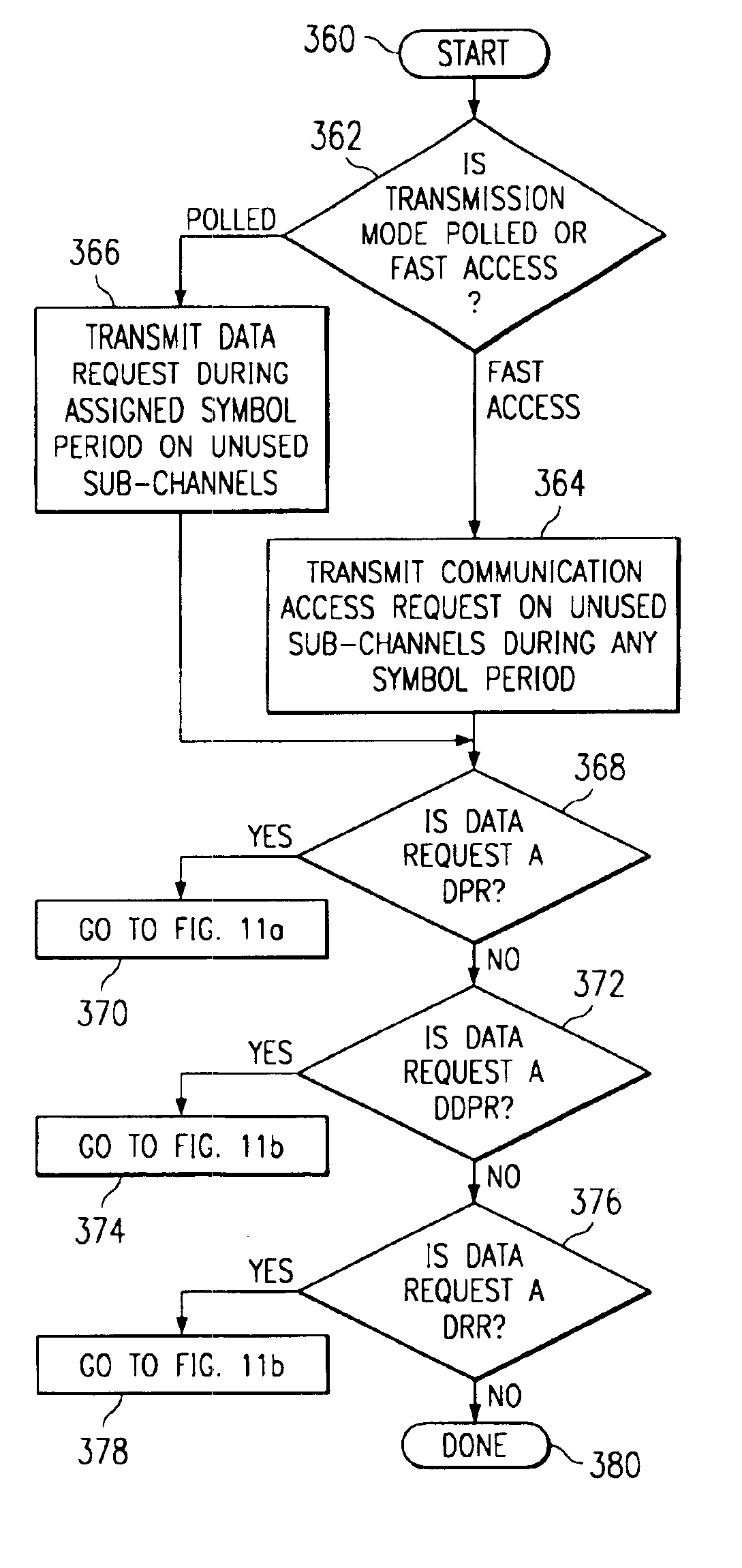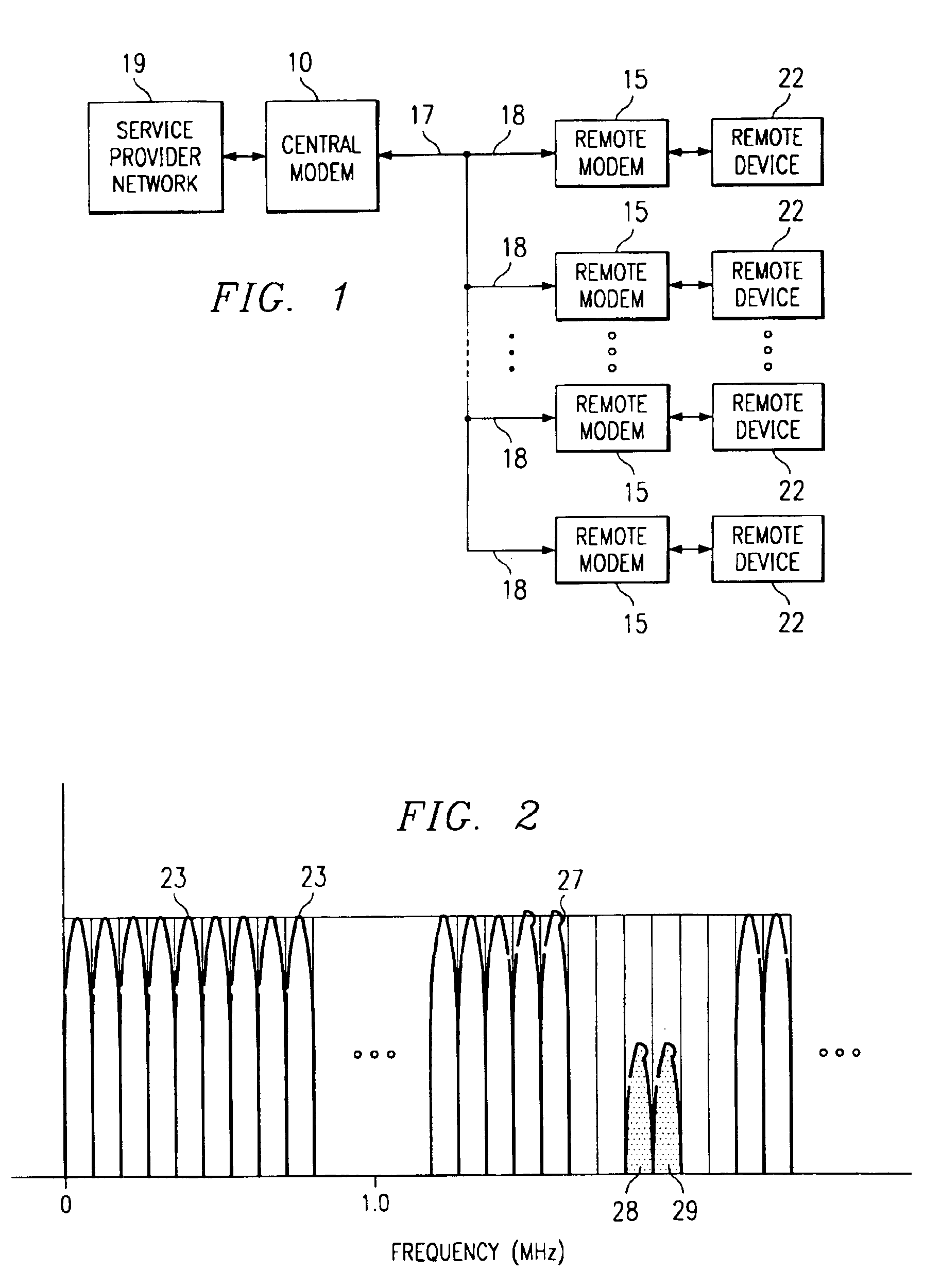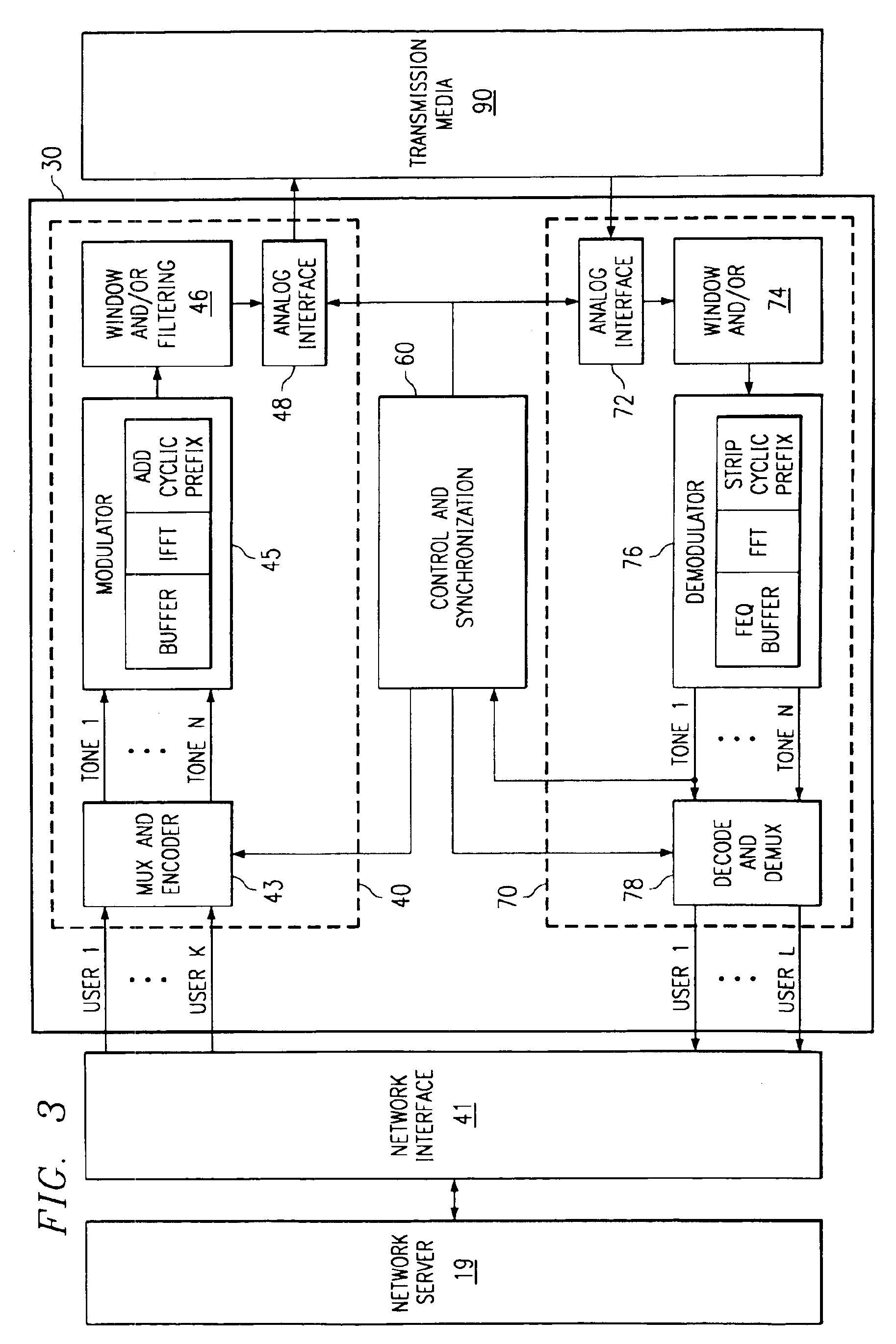Method and apparatus for coordinating multi-point to point communications in a multi-tone data transmission system
a multi-point to point communication and data transmission technology, applied in data switching networks, frequency-division multiplexes, synchronisation signal speed/phase control, etc., can solve the problems of inefficient approach, inability to dynamically allocate bandwidth, and inability to meet the needs of stationary digital cellular transmission systems. to achieve the effect of facilitating bandwidth allocation, facilitating dynamic allocation of bandwidth, and facilitating system control
- Summary
- Abstract
- Description
- Claims
- Application Information
AI Technical Summary
Benefits of technology
Problems solved by technology
Method used
Image
Examples
Embodiment Construction
[0040]Discrete Multi-Tone (DMT) data transmission schemes have been shown to facilitate high performance data transmission. Among the benefits of DMT architectures is that they have high spectral efficiencies and can adaptively avoid various signal distortion and noise problems. Since they have very high data transmission capabilities, in most applications selection of a DMT data transmission scheme will provide plenty of room for the expansion of service as the demands on the data transmission system increase. Discrete Multi-tone technology has applications in a variety of data transmission environments. For example, the ATIS Asymmetric Digital Subscriber Line North (ADSL) American standard contemplates use of a Discrete Multi-Tone data transmission scheme.
[0041]A detailed description of the protocols for ATIS ADSL North American standard Discrete Multi-Tone (DMT) transmission scheme is described in detail in the above referenced ATIS contribution. The standardized system uses 256 ...
PUM
 Login to View More
Login to View More Abstract
Description
Claims
Application Information
 Login to View More
Login to View More - R&D
- Intellectual Property
- Life Sciences
- Materials
- Tech Scout
- Unparalleled Data Quality
- Higher Quality Content
- 60% Fewer Hallucinations
Browse by: Latest US Patents, China's latest patents, Technical Efficacy Thesaurus, Application Domain, Technology Topic, Popular Technical Reports.
© 2025 PatSnap. All rights reserved.Legal|Privacy policy|Modern Slavery Act Transparency Statement|Sitemap|About US| Contact US: help@patsnap.com



